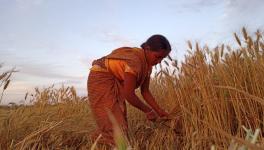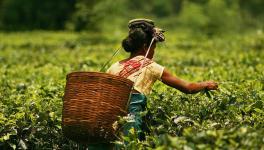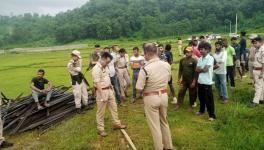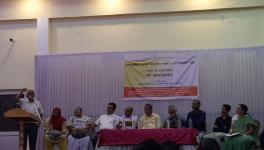Assam: How Monocropping is Rewriting Dolamora’s Landscape
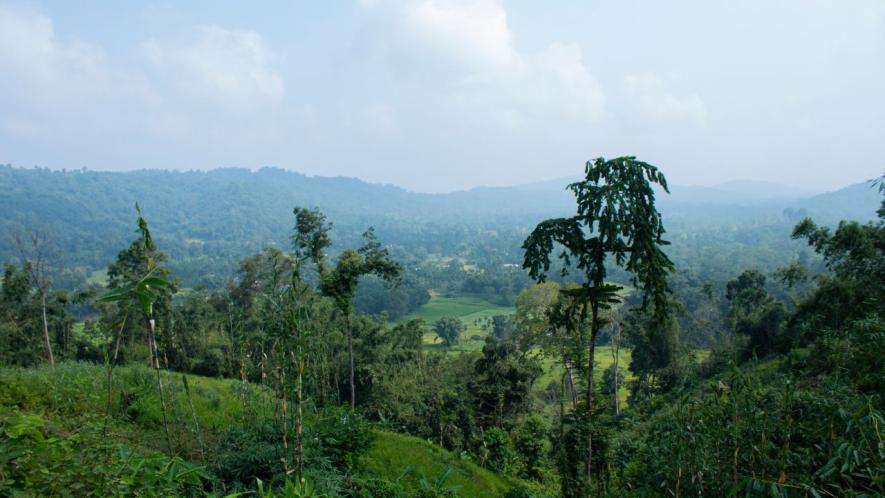
Hills of Dolamora
The early morning haze in Dolamora, East Karbi Anglong, Assam cloaks the hills in green, but this green is increasingly deceptive. Fields that once brimmed with millet, native rice, vegetables, and pulses are now dominated by just a handful of crops. The same story repeats itself across the slopes: betel nut, rubber, and above all, tea.
“We used to grow everything—different types of rice, pumpkin, beans, sesame, chillies,” says Tado Lekthepi, a Karbi elder. “Now it’s just one or two things. Even our neighbours have switched to rubber or tea.”
Tea plantations, long associated with Assam’s economic identity, are now expanding into areas like Dolamora—not just as livelihoods, but as monocrop models. The result: a slow erasure of traditional farming systems and a rising dependency on chemicals.
Tado Lekthepi’s seed bank
Tea Gardens: Green, but Not Clean
For many, including the Adivasi communities historically brought to Assam as tea workers, these plantations represent both survival and struggle.
“We lived close to the land,” Lekthepi recalls. “There were no chemicals back then—just people, their hands, and the soil. Now, everything is different. It’s all about fertilisers, pesticides, and targets.”
During the COVID-19 pandemic in 2021, Nittu briefly worked at the tea estate to support her education. She remembers the labour-intensive nature of the job: inspecting workers’ performance across bigha after bigha of tea bushes.
“I saw firsthand how much chemical fertiliser, weedicide, pesticide (Red-flag, Maxima), herbicide; Including Urea, DAP, Zing, Potas, MOP, etc are used. About 75 kilograms per bigha. And this wasn’t always the case,” she says.
“Permanent workers earn Ra 250 a day, but most of us are on temporary contracts. We don’t have ownership of the land or even security in our jobs. The chemicals used on tea plants affect our health. What choice do we have?” adds Nittu’s Mother
Tea cultivation, though lush in appearance, is a highly extractive form of monoculture. The same plot is used year after year without fallow, leaving the soil depleted and dependent on chemical inputs for even basic productivity.
“Earlier, our soil could breathe. Now it’s always tired,” adds Tado.
This disconnect between labour and land is mirrored in the surrounding villages, where the Karbi people, indigenous to this region, are also seeing a profound shift in their relationship with the landscape.
The Shrinking Space for Tradition
Before monocropping, the Karbi people practiced jhum (shifting cultivation)—locally known as Aara Kheti. Families would rotate plots, allowing the land to rest and recover. This system was not just a livelihood—it was a seasonal rhythm that ensured biodiversity, soil fertility, and food security.
Tado Lekthepi’s Jhum field and her ChangTangi.
“We grew five to six varieties of rice—Johamusori, Pankaj, Bora, Xolpuna, Mekeraa—along with millets, vegetables, and forest herbs,” Tado says. “Now only Bora and Maigum remain.”
Land reforms and formalisation have forced families to settle on fixed, small patches of land (5–10 bighas), ending the rotational aspect of jhum. While some have received patta (land titles), the government retains the right to reclaim land, further disincentivizing long-term traditional use.
The shift to monocropping—tea included—has left a trail of degradation. Once maintained by organic recycling and natural fallow, the soil now requires heavy chemical inputs to yield.
Chemical runoff from tea gardens and other monocrops has polluted nearby rivers like the Diffloo, a tributary of the Dhansiri, which feeds into the eastern stretch of Kaziranga National Park.
Dolamora is not just a remote rural belt—it is a critical ecological zone. It forms the catchment of the Diffloo River, which sustains Kaziranga’s eastern ranges and several downstream riverine communities. “People working in these fields now complain of respiratory issues, skin diseases,” says Nittu. “But most don’t even link it to the chemicals.”
Local fish populations have collapsed. “In 2014, we stopped fishing. The water dried up or turned foul,” says Ramesh Gowala, Nittu’s brother.
Trapped Between Cash Crops and Culture Loss
For small and marginal farmers, the decision to adopt monocrops, tea, rubber, teak, or betel nut, is often less of a choice and more a matter of survival. Larger landholders benefit from government schemes and market access. Others become labourers on estates or turn to high-risk farming models.
Betel nut and tea plantations
“We don’t even use chemicals in our kitchen gardens,” says Nittu. “But the runoff from nearby tea plantations ends up everywhere.”
The economic strain is matched by a cultural one. With fewer people practicing traditional farming, community knowledge is eroding. Youth increasingly see farming as unrewarding and hard. “When they leave, they take our traditions with them,” Tado says quietly.
Much of the current policy framework still treats jhum as environmentally damaging, an idea seeded during the colonial era. “Shifting cultivation was never about destruction,” says agroecologist Soumik Banerjee. “It mirrors the forest’s own cycles of renewal. But instead of supporting it, we’ve let monoculture take over.”
"The need for large timber for ship building, railways & buildings was the principal reason for opposing shifting cultivation among the forest dwellers since the Forest Act came about in 1865. There is a need to appreciate and recognise this time-tested practice and work towards reviving and addressing the current vulnerabilities of the system, rather than discouraging or prohibiting it altogether," Banerjee added.
Assam’s tea history, dating back to British colonialism, was built on the suppression of indigenous forest-based livelihoods. The legacy continues today, not just through the tea estates but also through unchecked expansion of similar monocultures.
“The loss of vegetation due to tea and rubber plantations, and the chemicals they carry, are slowly killing this landscape,” warns environmentalist Monuhar Pegu. “If we don't reverse this monoculture mindset, we’ll lose both biodiversity and cultural resilience.”
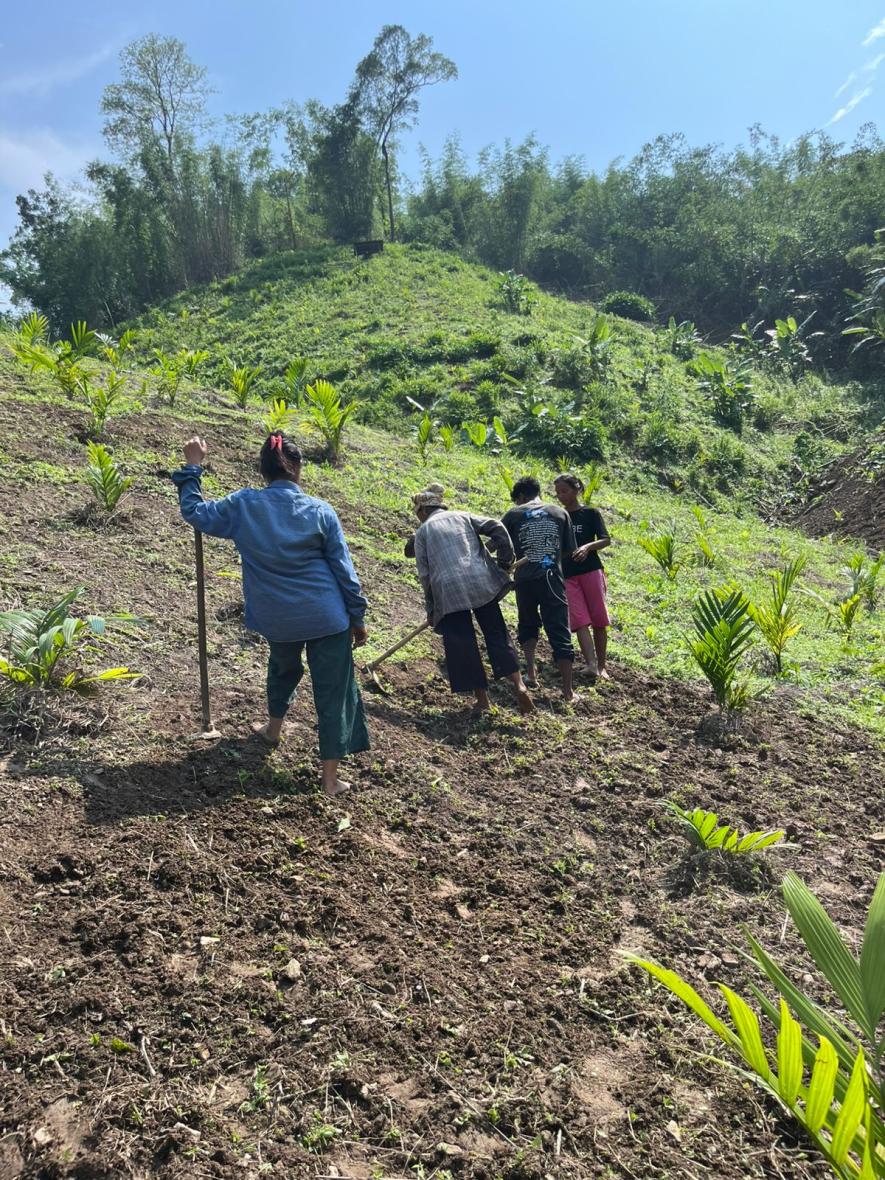
Preparation for mix croping and seed brodcasting
As the final patches of diverse cropping disappear and monocrops replace biodiversity, Dolamora’s landscape is losing its memory. Farming is no longer a relationship with the land—it has become transactional, chemical, and extractive.
“The land and the people are intertwined,” says Tado. “If one suffers, so does the other.”
Aditya is an interdisciplinary artist whose work deeply engages with the environment and socio-political issues facing contemporary India.
This story was produced under the NCNF Media Fellowship on Agroecology.
Get the latest reports & analysis with people's perspective on Protests, movements & deep analytical videos, discussions of the current affairs in your Telegram app. Subscribe to NewsClick's Telegram channel & get Real-Time updates on stories, as they get published on our website.











